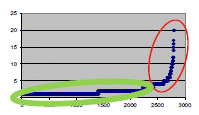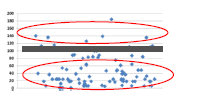Description
How to identify and correct maximal and minimal reorder quantities.
- Implement routine to review MRP parameters : Maximal REOQ (REOQmax), Minimal REOQ (REOQmin)
- Identify variability by defining criteria that allow quick win correciton on a daily list of Part Number
- Define rules and Import new data
REOQ and MRP ?
Material requirements planning (MRP) is a production planning and inventory control system that helps companies optimize their inventory levels and production schedules. It is used to determine the required quantities of raw materials, finished goods, and intermediate products that need to be manufactured in order to meet customer demand.
To calculate reorder quantities using MRP, you need to consider the following factors:
- Lead time: This is the time it takes to receive a shipment of goods after placing an order. You need to consider lead time when calculating reorder quantities so that you have enough time to receive the goods before you run out of inventory.
- Safety stock: This is the extra inventory you keep on hand to guard against unexpected demand or disruptions in the supply chain. You need to consider safety stock when calculating reorder quantities to ensure that you have enough inventory to meet customer demand even if something goes wrong.
- Order quantity: This is the amount of inventory you order each time you place an order. You need to consider order quantities when calculating reorder quantities to ensure that you are ordering enough inventory to meet customer demand but not so much that you are overstocking your warehouse.
What are risk of bad order quantity calculation?
Calculating the wrong order quantity can have a number of negative consequences for a business. Some potential risks of bad order quantity calculation include:
- Stockouts: If you order too little inventory, you may run out of stock and be unable to meet customer demand. This can lead to lost sales, dissatisfied customers, and damage to your reputation.
- Excess inventory: On the other hand, if you order too much inventory, you may end up with excess stock that you can’t sell. This can tie up cash and space in your warehouse, increasing your holding costs and decreasing your profitability.
- Inefficient use of resources: Incorrectly calculating order quantities can also lead to inefficient use of resources, as you may be producing more than you can sell or ordering too little and having to frequently place new orders.
- Poor forecasting: If you consistently order the wrong quantity, it could be a sign that your forecasting is inaccurate. This can lead to ongoing problems with inventory management and disrupt your production and supply chain.
It’s important to carefully consider all the factors that go into calculating order quantities and to regularly review and adjust your calculations to ensure that you are ordering the right amount of inventory.






